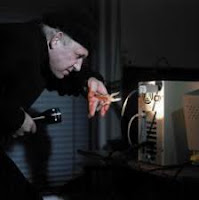4.2.2 Security Measures
What is Security Measures?
- A security measures is the protections that can reduce the risk of a problem occurring due to the computer security risk.
- Human Aspect : Awareness
Do not insert infected storage media to a computer.
Never open an e-mail attachment unless you are expecting the attachment and it is from a trusted source.
Update the antivirus software on a regular basics and configure it to examine all e-mail attachments for viruses.
A firewall is a hardware and/or software that protects a network’s resources from intrusion by users on another network such as the Internet.
Hardware firewall such as router has a built in firewall to stop intrusions before they attempt to affect your computer maliciously.
Software firewall is a utility program that detects and protects computer and its data from unauthorized intrusions.
Large organization may use intrusion detection software to identify possible security breaches.
Intrusion detection software automatically analyzes all network traffic, assesses system vulnerabilities, identifies any unauthorized intrusions, and notifies network administrators of suspicious network administrators of suspicious behavior patterns or system breaches.
An antivirus program protects a computer against viruses by identifying and removing any computer viruses found in memory, on storage media, or on incoming files.
Programs that detects and deletes spyware and other similar programs on a user’s computer
Human Aspect : Awareness
Firewall
Intrusion: Detection Software
Verifying & Authenticating Users
Measures
Human Awareness:
*Acceptable Use Policy (AUP)
*Disable file and printer sharing on the Internet
Firewall
*Hardware Firewall
* Software Firewall
Intrusion Detection Software
* To identify possible security breaches
Verifying & Authenticating Users
*User names & passwords
*Possessed objects
*Biometric Devices
Human Aspect : Awareness
Real Time Location System (RTLS)
Video Surveillance
Measures
Human Awareness:
*Doors and windows locked
*Cable locks
*Install alarm system
Real Time Location System (RTLS)
*RFID tags
Video Surveillance
Measures Against Software Theft
Software theft can be protected with:
Human Aspect : Awareness
Data Back-up
Copyright
Software Antipiracy Tools
Measures
Human Awareness:
*Keep software media in a secure location
Data Back-Up:
*Copy data to another storage medium
Copyright
Antipiracy Tools:
*License Agreement
*Product Key
Measures Against Information Theft
Information theft can be protected with:
Human Aspect : Awareness
Encryption
Verifying & Authenticating Users
•Measures
Human Awareness:
*Do not response to spoofed e-mail.
*Prevent identity theft
Encryption
*Encoding data & information to an unreadable form
Verifying & Authenticating Users
*User name & passwords
*Possessed objects
*Biometric Devices
Measures Against System Failure
System failure can be protected with:
A Surge Protector
Data Back-up
An Uninterruptible Power Supply (UPS)
Measures
Surge Protector
*To protect against electrical power variations
Data back-up
*Copy data to another storage medium
Uninterruptible Power Supply (UPS)
*To provide power during a temporary or permanent loss of power
























